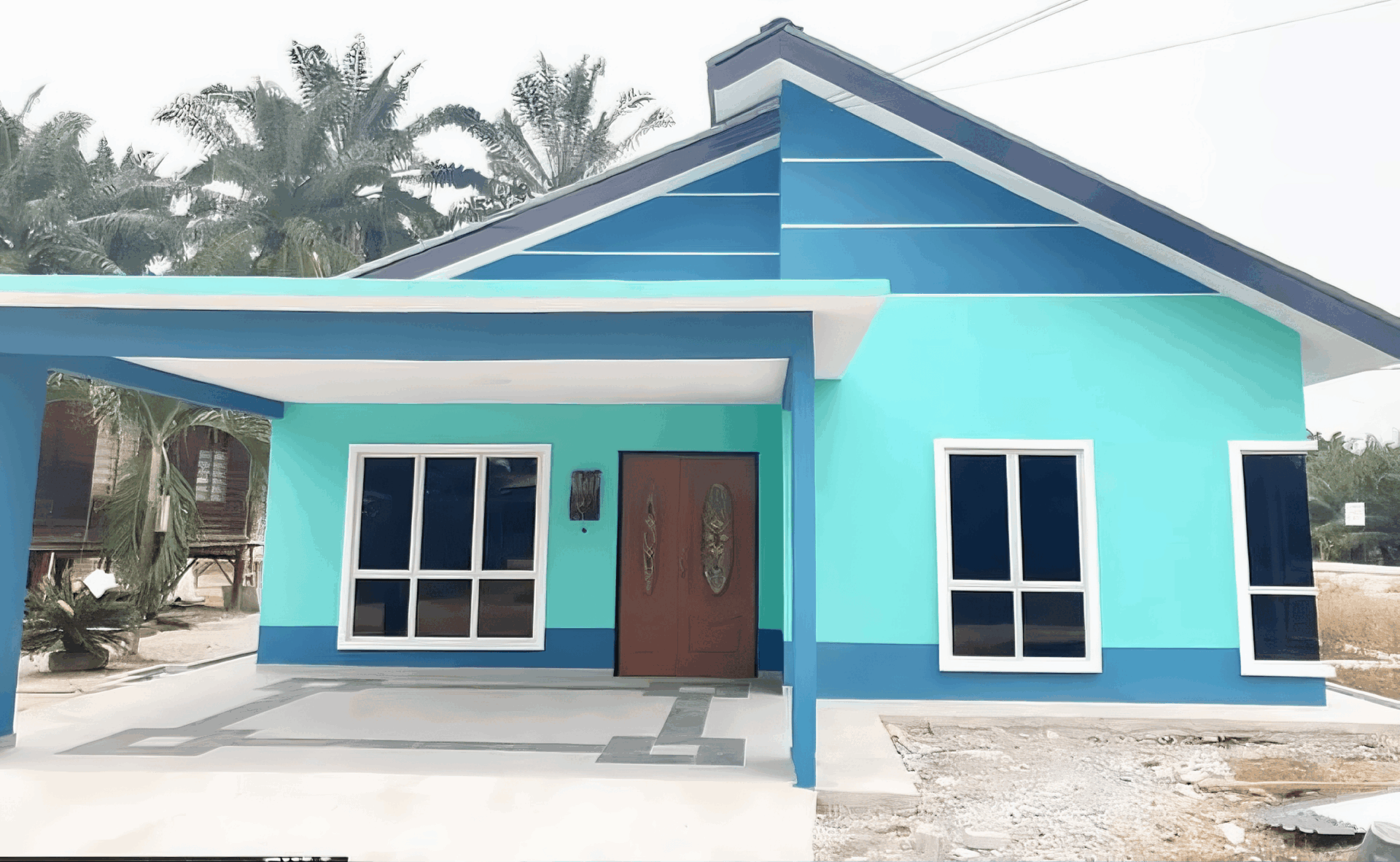Are you a construction manager in Malaysia juggling deadlines, budgets, and a team that seems to grow bigger every day? You’re not alone! The construction industry here is bustling, but with that excitement comes its own unique set of challenges. Whether you’re battling unpredictable weather, navigating regulatory requirements, or just trying to keep your crew motivated, it’s crucial to have some smart strategies up your sleeve. In this article, we’ll share 10 project management hacks specifically tailored for Malaysian construction companies. These tips will help you streamline operations, boost productivity, and maybe even squeeze some extra profit from your projects. So, grab a cup of kopi, sit back, and let’s dive into some practical solutions that can make a real difference on your job sites!
Maximizing Efficiency Through Agile Methodologies
In the fast-paced world of construction, leveraging agile methodologies can transform project management from a tedious chore into a dynamic strategy for success. The essence of agility lies in being responsive to change and fostering collaboration within teams. By implementing tools like Scrum and Kanban, construction teams can visualize progress, identify bottlenecks, and adapt quickly. This approach not only enhances transparency but also empowers team members to take ownership of their roles, leading to increased job satisfaction and productivity.
By breaking projects down into manageable sprints, construction companies can focus on delivering small, incremental results. Each sprint culminates in a review meeting, allowing teams to reflect on what worked and what didn’t. This habit of continuous improvement ensures that teams are not only meeting deadlines but are also refining their processes with every project. Here are some key advantages:
- Quick Adaptation: Ability to pivot when faced with unforeseen challenges.
- Team Collaboration: Encourages open communication and teamwork.
- Enhanced Quality: Regular feedback loops help catch issues early.
Additionally, utilizing agile tools can support proper resource allocation and budget management. For instance, when teams use a Kanban board, they can visually manage tasks while balancing workload and priorities. This method helps in minimizing waste by ensuring that resources are focused only on necessary tasks at any given time. A well-structured Kanban board can look something like this:
| Task | Status | Owner |
|---|---|---|
| Site Preparation | In Progress | Ali |
| Foundation Work | Planned | Rahim |
| Structural Framing | Pending Review | Lisa |

Leveraging Technology for Real-Time Collaboration
In today’s fast-paced construction environment, harnessing technology for effective collaboration is crucial. Platforms like BIM (Building Information Modeling) allow teams to visualize projects in a 3D format, making it easier for everyone to understand design elements and workflows. By incorporating these tools, companies can streamline processes, reduce errors, and ensure all stakeholders are on the same page from day one. You can also achieve smoother communication through apps like Slack and Trello, which serve as centralized hubs for sharing updates and documents.
Another powerful tool is the implementation of cloud-based project management software. This enables real-time updates that keep everyone informed about the latest changes, deadlines, and tasks. With platforms like Asana and Microsoft Teams, project members can collaborate seamlessly, no matter where they are. You can even automate reminders and notifications so that team members never miss a beat. That way, construction timelines become more efficient, and cost overruns can be minimized.
| Technology | Benefits |
|---|---|
| BIM | Improved visualization and reduced errors |
| Slack | Centralized communication |
| Asana | Task tracking and automation of reminders |
However, embracing technology goes beyond just using software; it also means fostering a culture of innovation within your team. Encourage your employees to explore new tools and share their experiences. By creating an environment where technology is valued, your teams will naturally lean towards solutions that enhance productivity. Furthermore, regular training sessions can keep everyone updated on the latest advancements, ensuring your company stays competitive.

Streamlining Communication Channels Among Teams
In today’s fast-paced construction environment, efficient communication can significantly influence project outcomes. Establishing clear lines of communication among teams ensures that everyone is on the same page. Utilizing tools like group messaging apps or project management software can help reduce misunderstandings and keep team members informed. Here are some ideas:
- Encourage regular updates via chat platforms.
- Utilize video calls for project discussions to add a personal touch.
- Implement clear channels for feedback and suggestions.
Another smart strategy is to set up weekly alignment meetings. These gatherings provide an opportunity for different teams to share progress, address challenges, and align their objectives for the upcoming week. This practice not only fosters accountability but also cultivates a unified team spirit across different departments. Consider these tips for effective meetings:
| Meeting Element | Best Practices |
|---|---|
| Agenda | Send it out in advance to keep everyone prepared. |
| Duration | Keep it under 30 minutes to maintain focus. |
| Follow-ups | Document decisions and share with the whole team. |
Furthermore, leveraging collaboration tools can enhance real-time communication, reducing delays and improving productivity. Teams should invest time in finding the right tools that fit their specific needs. Some popular options include project boards like Trello, task management software like Asana, and integrated solutions like Slack. It’s essential to promote the use of these platforms so that all team members feel comfortable communicating through them. Choosing the right tools not only streamlines communication but also empowers team members to take ownership of their tasks effectively.

Implementing Effective Risk Management Strategies
In the unpredictable landscape of construction, risk management is more than just a safety net; it’s a vital strategy for success. To tackle potential pitfalls, companies should start by building a solid risk register, a dynamic document that tracks potential hazards and their impacts on projects. This process allows teams to identify trends and recurring issues while ensuring everyone is on the same page. Don’t forget to involve all stakeholders in identifying risks—this includes engineers, site workers, and even clients.
Next, embrace a culture of open communication. Encourage team members to voice their concerns and insights about potential risks. Regular meetings that focus on risk assessment can significantly boost awareness and create a more resilient workforce. Establish clear channels for reporting risks and ensure that the information is accessible to everyone. This can be done using collaborative tools where updates are visible and easily shareable, enabling quick responses to arising issues.
Lastly, consider employing technology to enhance your risk management process. Software solutions can help analyze data trends and provide real-time updates on project health. Leveraging tools like drones to survey construction sites or using Building Information Modeling (BIM) can improve your ability to foresee risks before they become critical. Additionally, integrating a risk management approach into project planning stages means that potential hurdles can be addressed proactively, saving both time and resources.

Enhancing Budget Control with Accurate Forecasting
In the ever-evolving world of construction, having a firm grip on finances is crucial for success. One of the most effective ways to manage your budget is by integrating accurate forecasting methods. By analyzing past project data and current market trends, construction companies can predict future costs more reliably. This helps in setting realistic budgets and minimizing unexpected expenses, allowing teams to allocate resources more effectively. Consider adopting software tools designed for project cost estimation; they can greatly enhance the accuracy of your financial predictions.
Teams often face challenges when their initial forecasts fall short. To mitigate this risk, it’s helpful to employ a continuous forecasting approach. With this method, instead of a traditional one-time forecast, your project team updates their financial plans regularly—perhaps monthly or quarterly. This ongoing review can uncover variations early, leading to timely interventions before financial issues escalate. Be sure to include the following steps in your forecasting process:
- Collect Data: Gather information from recent projects to inform future forecasts.
- Analyze Trends: Identify patterns in spending and resource allocation.
- Adjust as Needed: Be flexible and revise your forecasts based on real-time data.
collaboration among stakeholders can enhance budget control significantly. Encourage open communication among project managers, financial officers, and field teams to ensure that everyone is aligned on financial goals. This shared accountability leads to better decision-making and a collective effort to keep projects within budget. To visualize investment versus expense for each project phase, consider using a simple table format to track metrics:
| Project Phase | Estimated Budget (MYR) | Actual Expenses (MYR) |
|---|---|---|
| Planning | 50,000 | 45,000 |
| Execution | 150,000 | 160,000 |
| Closing | 30,000 | 25,000 |
By maintaining engagement among all parties involved, you can create an environment that not only supports accurate forecasting but also encourages proactive management of your overall budget.

Fostering a Culture of Safety and Compliance
In the fast-paced world of construction, where deadlines loom and budgets tighten, it’s easy to overlook the importance of safety and compliance. However, fostering a culture that prioritizes these elements not only protects your team but also enhances project efficiency. A proactive approach involves regular training sessions that keep everyone updated on the latest regulations and best practices. Consider implementing these initiatives:
- Daily Safety Briefings: Start each day with a quick huddle to discuss potential hazards on site.
- Incentive Programs: Reward employees for maintaining safety standards and adhering to protocols.
- Clear Communication Channels: Establish a system for reporting safety concerns without fear of repercussion.
Another significant aspect of building a compliant culture is integrating safety into your project planning from day one. Utilizing technology can streamline this process. For instance, employing project management software designed for the construction industry can help track compliance and safety metrics effectively. Consider the following table to visualize essential safety elements in your project plans:
| Project Phase | Safety Checklist | Compliance Requirement |
|---|---|---|
| Planning | Risk Assessment Completed | Local Regulations Reviewed |
| Execution | Safety Gear Inspected | Site Inspections Scheduled |
| Closure | Final Safety Audit Conducted | Documentation Submitted |

Continuous Learning and Development for Project Teams
In today’s fast-paced construction industry, staying ahead of the game requires teams to embrace a culture of ongoing education. By prioritising continuous learning, project teams can adapt to emerging trends and technologies that shape the landscape of construction management. This not only enhances the skills of individual team members but also contributes to the overall efficiency and effectiveness of the group.
Here are some effective strategies for fostering continuous development:
- Regular Training Sessions: Schedule workshops and training that focus on the latest project management software and construction techniques to keep everyone updated.
- Peer Learning: Encourage team members to share knowledge and skills with each other through informal lunch-and-learn sessions.
- Webinars and Online Resources: Create a mini-library of relevant online courses and webinars that team members can easily access at their convenience.
- Feedback Culture: Implement a system for constructive feedback, where team members can share and receive insights on their performance.
To track progress and the effectiveness of these initiatives, consider implementing a learning management system (LMS) or simple tracking tables. These tools can help monitor the participation rates and outcomes of various training programs. Here’s a simple example of how you can structure this information:
| Training Activity | Attendance Rate | Minutes of Training | Employee Feedback |
|---|---|---|---|
| Safety Management Workshop | 85% | 120 | Positive |
| Project Management Tools Overview | 75% | 90 | Constructive |
| New Regulations Update | 90% | 60 | Very Positive |

Building Strong Relationships with Suppliers and Subcontractors
Establishing solid partnerships with suppliers and subcontractors is crucial for the smooth execution of any construction project. This begins with open lines of communication. Be sure to regularly check in, whether it’s through formal meetings or casual catch-ups over coffee. Building rapport can lead to a better understanding of each other’s needs and limitations, which in turn fosters a collaborative work environment. When everyone is on the same page, delays and misunderstandings can be greatly minimized, making the project flow much smoother.
Another key element is transparency. Sharing project timelines, budget expectations, and changes as they occur helps in aligning everyone’s efforts toward a common goal. Don’t hesitate to discuss challenges as they arise; a proactive approach can prevent many headaches down the line. Consider creating a shared online platform where all parties can access essential project documents, schedules, and updates. This can significantly reduce confusion and ensure everyone has the latest information at their fingertips.
Lastly, nurturing these relationships means recognizing and rewarding excellent work. Small gestures of appreciation, such as sending thank-you notes or celebrating milestones together, can go a long way in strengthening bonds. Establishing trust and showing respect to your suppliers and subcontractors will not only enhance your current projects but also pave the way for future collaborations. Ultimately, a community of reliable partners is invaluable in the fast-paced world of construction.
To Wrap It Up
And there you have it! With these 10 project management hacks, you’re all set to take your construction game to the next level. Remember, it’s not just about getting the job done; it’s about doing it smart and efficient. Whether you’re managing a small renovation or a massive high-rise, these tips can save you time, money, and a whole lot of headaches.
So, go ahead and give these strategies a shot. The construction landscape in Malaysia is ever-evolving, and you want to be one step ahead. Keep innovating, keep collaborating, and most importantly, keep building dreams—one brick at a time. Happy constructing!
Source link
kontraktor rumah
bina rumah
pinjaman lppsa
pengeluaran kwsp
spesifikasi rumah
rumah batu-bata
pelan rumah
rekabentuk rumah
bina rumah atas tanah sendiri
kontraktor rumah selangor
rumah banglo




